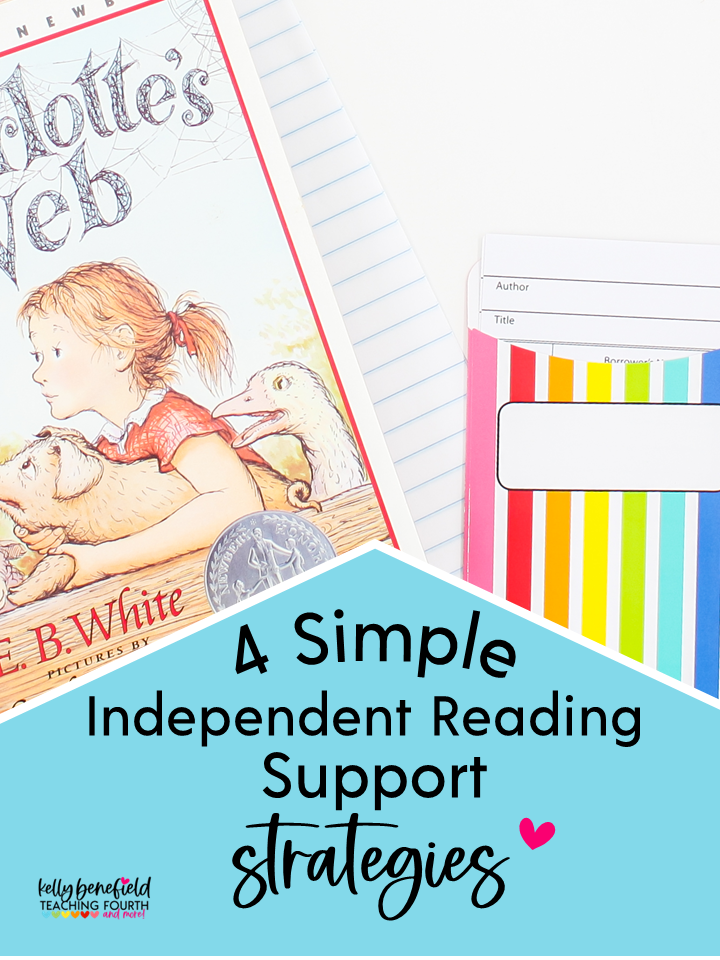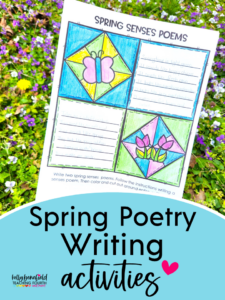I love independent reading time, but what are some simple and easy independent reading support strategies to use with our students?

I firmly believe that independent reading time is beneficial to students. When students are engaged in independent reading throughout the year, it can help increase vocabulary, fluency, and overall reading achievement. Independent reading time and student choice can help increase student motivation for reading and help students foster a love for reading.
No matter your reading teacher style, chances are that you daily or periodically teach a mini-lesson to introduce or review a reading strategy or skill. Often I would teach my mini-lesson, then simply send my students away for independent reading time. But, could there be a better connection between the two?
Independent Reading Support Strategies

How then do we get our students to make connections to the mini-lesson during independent reading? Independent reading provides students with opportunities to practice the skills and strategies that were taught during mini-lessons. Here are 4 independent reading support strategies that can help students make those needed connections back to the mini-lesson.
Anchor Charts
Utilize the anchor charts that you created during your mini-lessons. Leave anchor charts visible and easily assessable to students during independent reading time and encourage students to use anchor charts during their reading. Anchor charts provide great visual reminders for students as they read. Ask students to refer back to the anchor chart during their independent reading.
Call to Action
At the end of the mini-lesson or just before sending students off for independent reading, provide students with a call to action for the day that is related to the day’s mini-lesson. For example, if today’s mini-lesson focussed on character traits, the call to action could be for students to find evidence of a character trait for the main character in the book that they are reading.
A call to action is a very simple independent reading support strategy that can help your students look for and identify elements in their reading related to your focus skill or strategy from the mini-lesson. Once independent reading time is complete, call students back together to discuss their findings.
Journaling
Give students opportunities to reflect on their reading by journaling. Provide a few minutes at the end of independent reading time for students to reflect on their reading by writing about the skill or strategy and how it related to their book or story. Students can begin by giving a brief summary of their reading for the day(such as a 20-word gist). Then they can write a sentence or two about the evidence found in their reading related to the skill for the day.
This type of journal writing is meant to be quick and easy. Once students have written, they may share with a partner or share with the class. You may even choose to rotate around the room as students are writing and choose 2 or 3 students to share aloud.
Graphic Organizers
Graphic organizers are a great tool to utilize at the end of independent reading to support readers. Providing your students with a graphic organizer related to the mini-lesson can benefit your students by helping them construct understanding of the concept through the text. They are a great scaffolding tool to help support student learning and can guide students to discover and relate the key concept from the mini-lesson to their text.
Graphic organizers can be completed during or after reading, but it is important to remember that the majority of independent reading time should be preserved for reading.
Do you have a great set of graphic organizers? Try my Reading Fiction Graphic Organizers with over 220 graphic organizers (pictured above) to use with any reading skill or reading strategy that you may teach. This set is perfect for your upper elementary reading program. You are sure to use these again and again, year after year!
Find out more about their benefits HERE.









